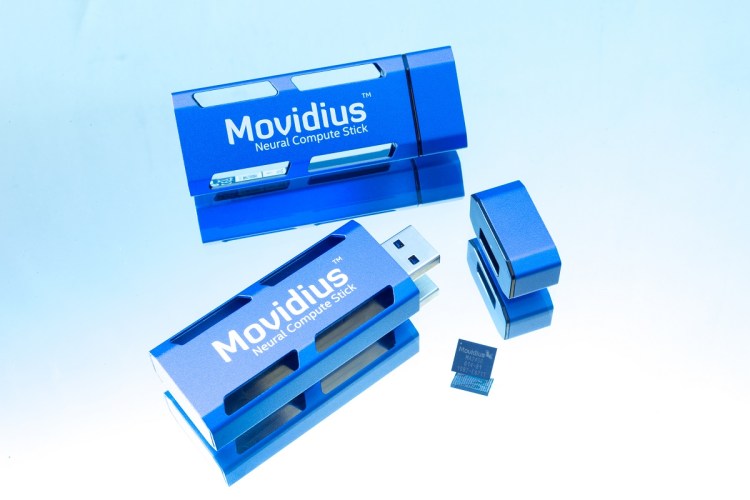Watch all the Transform 2020 sessions on-demand here.
Hoping to lower the bar to entry for those making artificial intelligence apps, Intel launched the Movidius Neural Compute Stick, the world’s first USB-based deep learning inference kit and self-contained AI accelerator.
The compute stick, which is akin to other Intel PC-on-a-USB products, can deliver deep learning neural network processing capabilities to a wide range of host devices at the edge of a network. It is designed for product developers, researchers, makers, and hardware hobbyists. Intel acquired vision processing startup Movidius for an undisclosed price in 2016.
The Movidius Neural Compute Stick aims to reduce barriers to developing, tuning, and deploying AI applications by delivering dedicated high-performance deep neural network processing in a small form.
Intel, which is investing heavily in all sorts of AI products, wants to ensure developers are “retooling for an AI-centric digital economy.”
June 5th: The AI Audit in NYC
Join us next week in NYC to engage with top executive leaders, delving into strategies for auditing AI models to ensure fairness, optimal performance, and ethical compliance across diverse organizations. Secure your attendance for this exclusive invite-only event.
“The Myriad 2 Vision Processing Unit (VPU) housed inside the Movidius Neural Compute Stick provides powerful, yet efficient performance — more than 100 gigaflops of performance within a 1W power envelope — to run real-time deep learning neural networks directly from the device,” said Remi El-Ouazanne, vice president and general manager of Movidius, in a statement. “This enables a wide range of AI applications to be deployed offline.”
Machine intelligence development is fundamentally composed of two stages: (1) training an algorithm on large sets of sample data via modern machine learning techniques and (2) running the algorithm in an end-application that needs to interpret real-world data. This second stage is referred to as “inference,” and performing inference at the edge — or natively inside the device — brings numerous benefits in terms of latency, power consumption, and privacy, Intel said.


